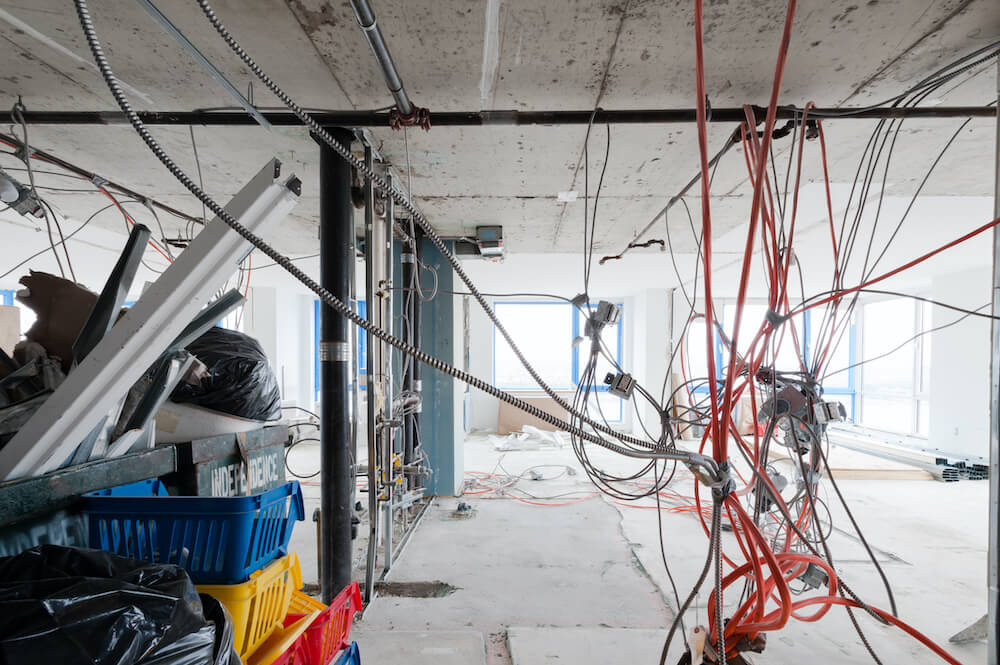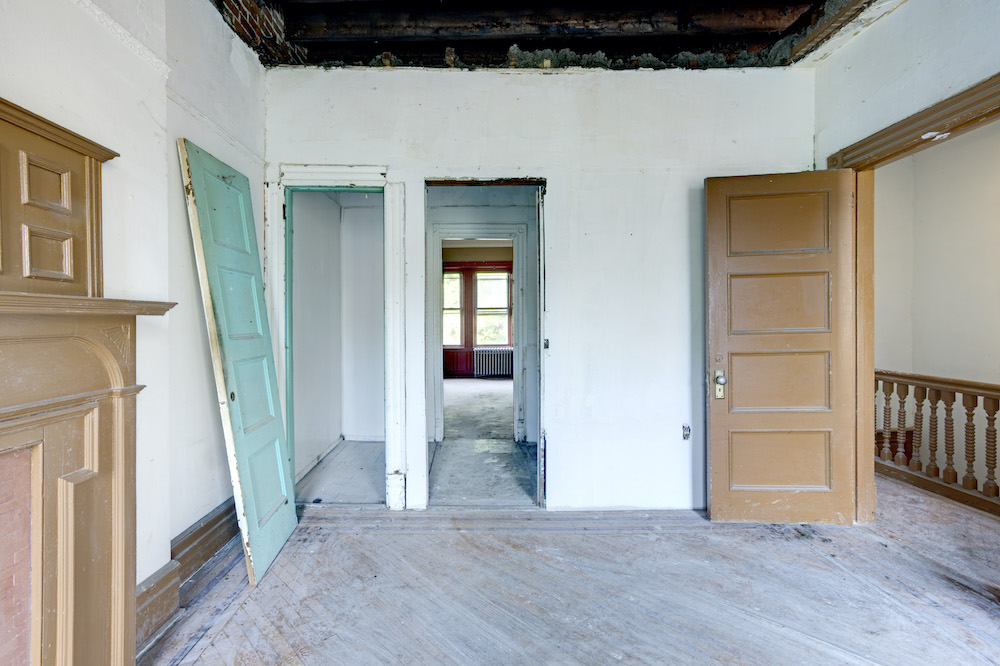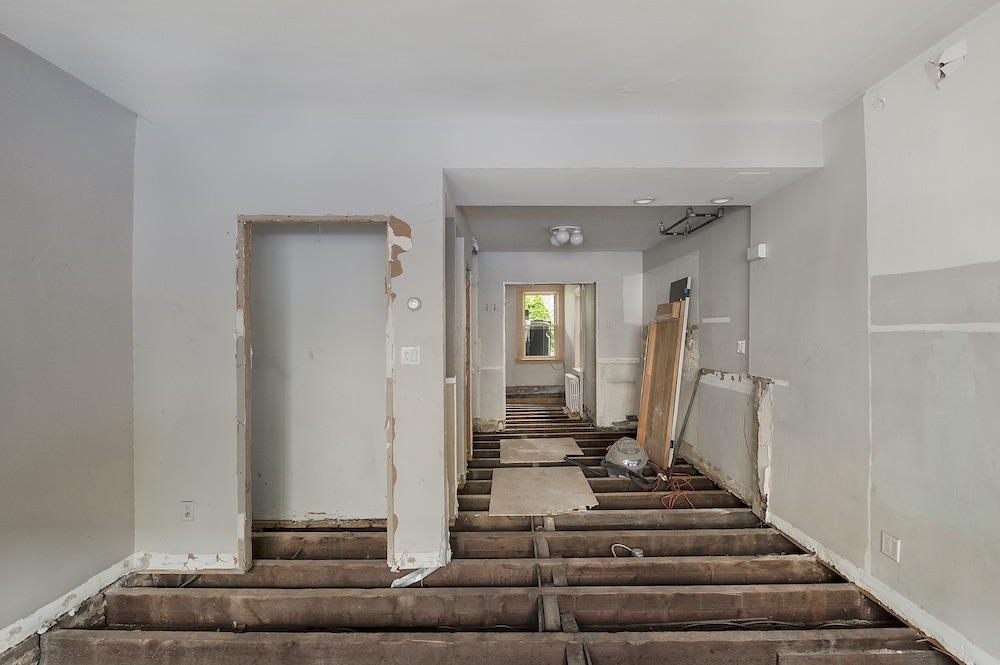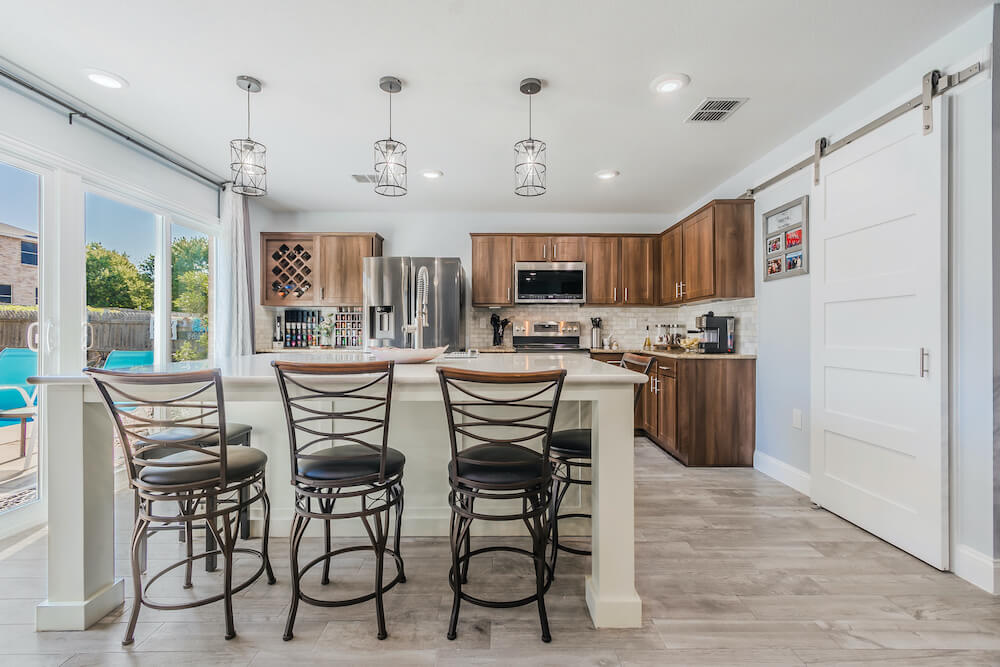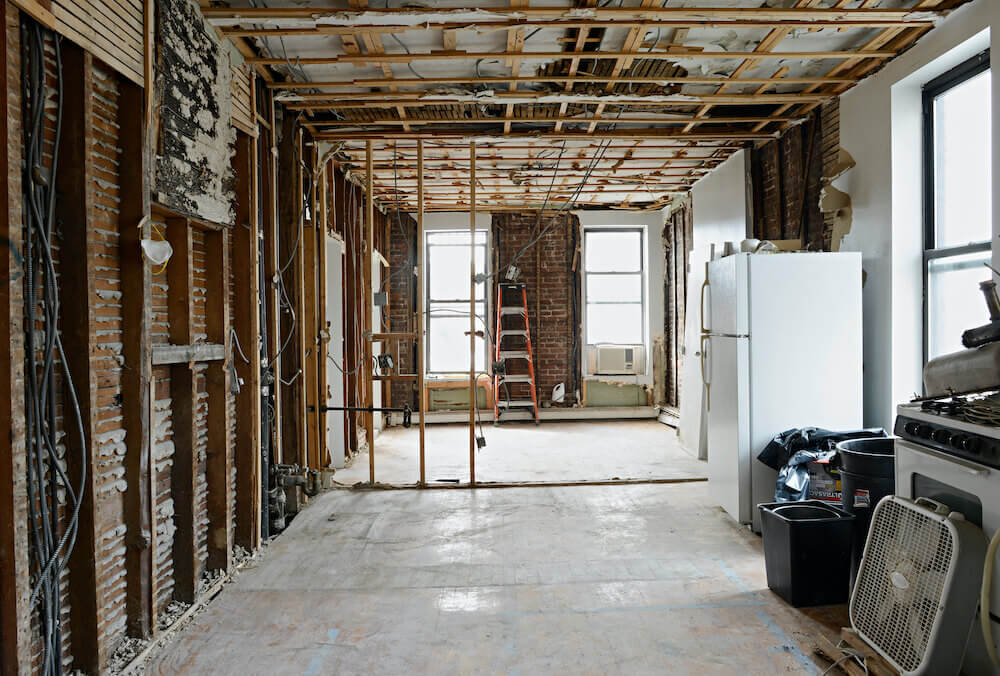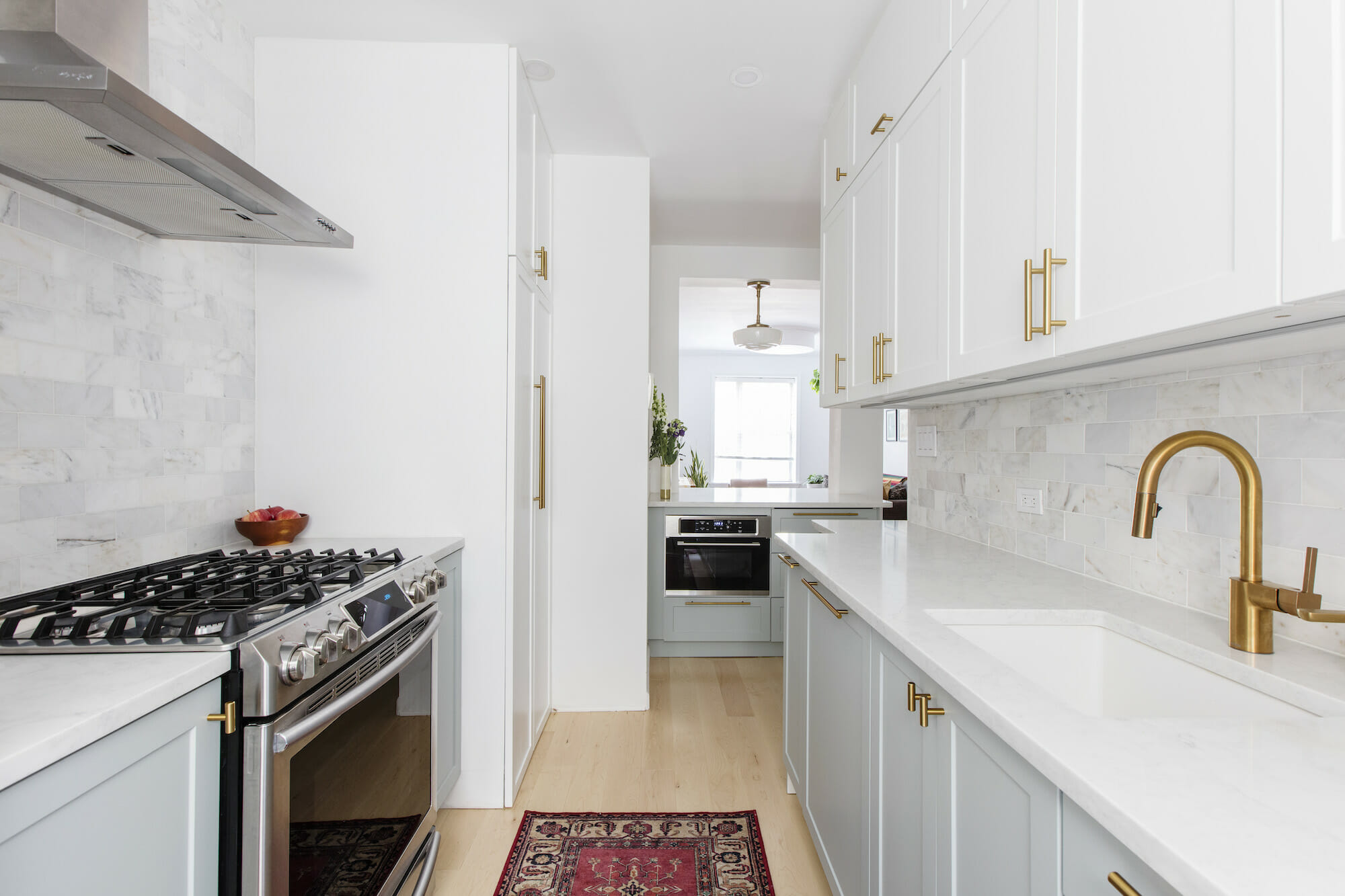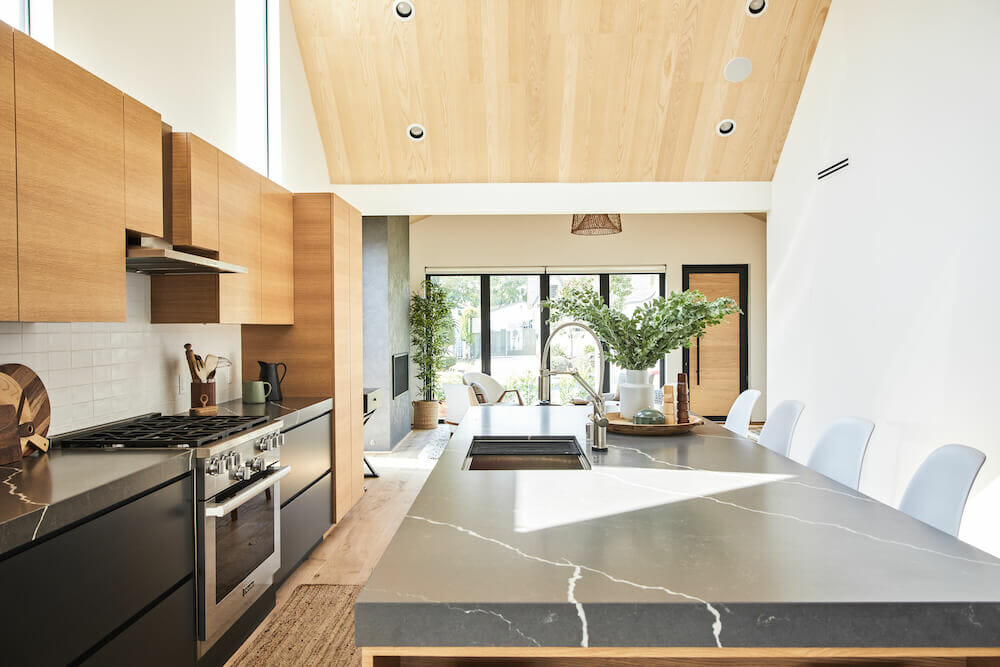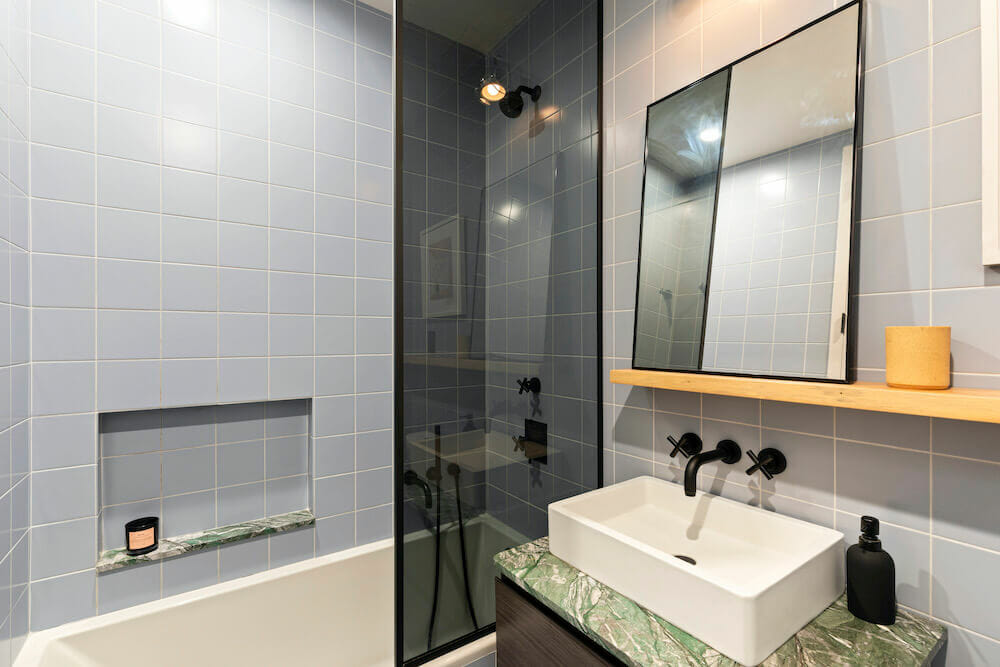What Does Electrical Wiring Cost in an NYC Home Remodel?
Know the process and costs for replacing electrical wiring at home to keep your renovation surprise-free
New homeowners and prospective buyers in NYC often learn that electrical upgrades might be needed for a decade- or century-old apartment or townhouse. “Electrical work,” though, is a vague term that ranges from installing a light fixture to replacing a building’s internal wiring. So you’re wondering: what does it cost to replace electrical wiring in a home? Sweeten offers some tips and expert advice about electrical work and potential costs.
Sweeten matches home renovation projects with vetted general contractors, offering guidance, tools, and support—for free.
Because electrical magic happens behind walls, forecasting the scope of additions and costs to update electrical wiring can be challenging. Those cost estimates are also crucial if you’re budgeting for a renovation or for a new home purchase.
How do I know what kind of electrical work a place needs?
Analyzing the existing electrical
Contractors will first examine the electrical panel (or “box”) to determine circuit load capacity. In other words, what more can the existing wiring handle? Experienced contractors can generally tell by looking at the circuits what can and cannot be done. That is, do you need to add more capacity to the existing system? Or, upgrade to a larger panel because slots for breakers are full?
Electrical needs for older homes
Pre-war apartments that haven’t been updated in decades often need significant electrical re-wiring and additional wattage to support modern electrical demands. Many NYC buildings constructed through the early part of the twentieth century were multi-layered with older wiring systems. Some have ungrounded systems that lack code-approved grounding conductors. Others have metallic insulation materials like aluminum or copper wiring that may actually increase the chances of electrical shock or fire. These older wiring systems, typically with 60 to 100 amps of service, violate current electrical codes. They also fall short of the standard minimum of 200 amps generally needed to power a home.
According to N.Y.-based Sweeten general contractor Frank, “I’ve done a lot of new services, and I recommend having new electrical. When you spend X amount of dollars on the apartment renovation, you need everything to be working.”
Ultimately, the electrical code determines what’s required, and it’s highly detailed. Each room must have a light fixture, for example, and smoke and carbon monoxide detectors must be hardwired. (This is because battery-powered models are not allowed.) This evaluation of your system is part of your walk-through with your general contractor.
Renovate to live, Sweeten to thrive!
Sweeten brings homeowners an exceptional renovation experience by personally matching trusted general contractors to your project, while offering expert guidance and support—at no cost to you.
What if I just want to install new appliances?
Installing air conditioners, appliances, or entertainment systems may seem simple. However, these can quickly overwhelm an older building’s capacity. Your home’s electrical load capacity is like a surge protector on a much larger scale. If you have too many wires plugged into an outlet, the circuit may overload. That leads to tripped breakers and blown fuses that shut down all power. So, if your electrical system is not capable of handling the additional load, a relatively straightforward appliance installation could become a much more invasive and substantial project. Installing a new electrical circuit panel or a complete overhaul of the electrical wiring may be possible.
One clear example is air conditioning. “For homes without central AC,” general contractor Frank noted, “you have to run a dedicated line in every room for an AC unit. It could be either a wall unit or a window unit, but each room has to have a dedicated outlet for the AC unit.” Kitchens and bathrooms are not included in this requirement.
Each circuit is wired from that AC unit to the panel with no other devices drawing power from it. That can add up to a substantial amount of new wiring to meet code, and it’s not optional. The entire system must be brought up to code, whether or not you install an AC unit. As for cost for this project, it’s highly variable and, as always, depends partly on the panel having capacity for new circuits. A dedicated line, Frank said, “would run between $300 and $1,000.”
How does rewiring work?
The electrical rewiring process
If your place is in for a full electrical upgrade, you need to plan and budget for a labor-intensive and disruptive process. Your electrician will temporarily shut off power and your contractor will open up the walls. Since wires are attached to framing within the walls, rewiring can be very invasive. Your team might completely demolish entire walls to access all the old wires and replace them.
One type of surprise for homeowners, said Sweeten general contractor Mohsen, who is based in New York, is framing changes. Bringing older homes and apartments up to modern standards may require adjusting the existing framing to accommodate new equipment.
“What is behind the ceiling? Do we have enough space for recessed lights?” he said. “Do we have enough space for the fan? Choosing a fan that doesn’t fit the space may require reframing. Sometimes dropping the entire bathroom ceiling for the fan can also be a surprise,” Mohsen added.
How much will electrical wiring cost?
Budgeting for an electrical overhaul
To finish, the walls are plastered and painted. The electrician connects the remaining switches and outlets, closes up the new electrical panel, and installs light fixtures. The full electrical wiring cost of this kind of project, with demolition, permits, labor, materials, construction, and painting can cost from $15,000 and up depending on the size of your space and extent of work. If you are gut-renovating an entire home, a full electrical overhaul might represent somewhere around 5% of your total budget. If your renovation is limited to a particular room (like a kitchen), a full electrical overhaul may end up matching or exceeding the total cost of the project you’re planning. The costs to update electrical wiring in a home involve more than just electrical work.
Rewiring aside, what else might I need for electrical work?
Contractors assess electrical needs and costs for clients based on a series of questions:
1. What is already in place vs. what you are trying to accomplish?
Identify what kind of light fixtures or electrical systems are in place and what’s not there. If you want to install lighting, put in a security system, or run a phone line in a particular location that doesn’t have existing wiring, contractors have to perform an electrical “rough-in.” That is the preliminary step to lay out the basic wiring to proper specifications before connections and insulation are completed. The rough-in cost is generally calculated by the length of the wiring lines installed (linear feet running from the circuit box to the point where outlets and switches are mounted), the cost of materials, and the labor rate. Rough-ins might also be charged at a flat rate of $250–$400 per junction box, outlet, or switch.
2. What type of light fixtures and finishes do you want and how many do you need?
Contractors charge labor costs that include running cables to devices and connecting wiring to circuit boxes based on the number and type of fixtures you want to install. Generally, swapping an old light fixture for a new one comes in at around $100 per fixture or at an hourly fee. Installing new fixtures like pendants and recessed LED lights comes in at around $200–$400 per fixture and larger, heavier fixtures like chandeliers cost in the range of $500–$800 per fixture.
3. How much amp service does your electrical panel hold?
Electrical panels in NYC usually hold 200 amps of service, so if your electrical service is short of that, the system won’t have enough power or space in the circuit box to accommodate new demands. In this case, you need to upgrade your electrical panel, which can cost $2,000 to $5,000 and up for a new box. If you have an existing electrical panel with enough room for new circuits but you’re planning a renovation that might add some heavy-duty appliances, you may want to consider adding a new circuit breaker, which typically costs $300 to $800 per breaker in order to accommodate a higher electrical capacity load. Adding a new circuit to the panel allows you to install more outlets, which generally cost around $100 to $300 per outlet.
Frank noted that older homes with outdated service may present an unwelcome surprise if the service to the house is inadequate. He recently completed a project that required new 200-amp service from the street, as the existing service was only 80 amps. That new service required the electric company to run a new buried line to the house, and also required trenching in the yard and a new poured concrete sidewalk. All that work cost the homeowners $5,000 before Frank could even get to work inside the home.
Permits and processes for electrical work
For anything other than a fixture swap or a straightforward appliance installation, you will need an electrician licensed by the Department of Buildings who must first file an electrical application and pay permit fees in order to conduct electrical work. Once a permit is obtained, an inspection must take place, and a certificate is mailed to ensure that the work was properly completed and inspected.
The cost to replace electrical wiring is hugely variable. Balancing current wiring with future needs while meeting code is complex and requires a competent professional electrician.
—
Sweeten handpicks the best general contractors to match each project’s location, budget, scope, and style. Follow the blog, Sweeten Stories, for renovation ideas and inspiration and when you’re ready to renovate, start your renovation with Sweeten.
